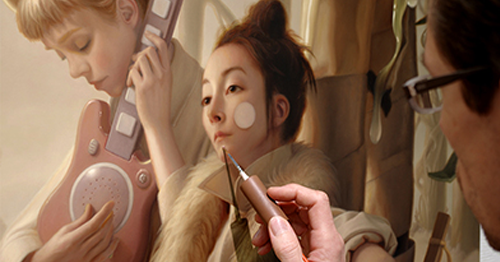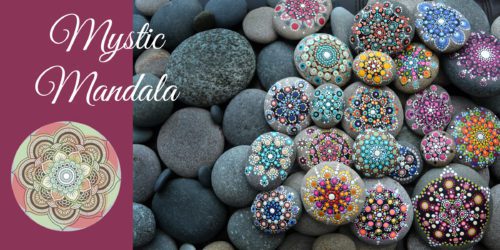- Session: Sept 5th – Oct 10th (6wks)
- Day/Time: Tuesdays (9am-11:30pm)
- Instructor: Steve Chmilar
- Experience: All Levels
- Ages: 16+
- Cost: $295/ 6 classes
- Supplies: Listed below
This new class is for all levels exploring different exercises each 2.5 hour session. This course is neither beginner, intermediate or advanced, it is fundamental for all oil painters who are serious about improving their painting skills and overall oil painting practice. In this five session workshop, Steve Chmilar will demystify the centuries old atelier oil painting method by breaking steps down into two simple categories; direct (alla prima) and indirect (layers). The goal of this course is for painters to understand exactly what oil paint can do – “so that we can control the medium, rather than having the medium control us.”
This course differs from the Beginner and Level 2 Oil Painting classes where we work on one painting over 5 to 6 weeks. Instead, Oil Painting Skill Development is a similar structure to Steve Chmilar’s drawing classes where we work on many different exercises. All the materials you will need can be found at any art store. This course will be taught in an odour free environment without the use of any toxic mediums such as thinner or turpentine.
Course Outline:
Class 1: Preparing for the refined look that only indirect (layered) painting can achieve. Copying a small part of a realistic figure and a gradient with fast drying pigments to prepare for layers in future classes. One with monochrome raw umber and white, the other with all fast drying oil colors.
Class 2: Edges. It is often said that you can recognize a painters style by how they paint their edges. In this class, we make many studies of horizon lines (trees, hills, fog, bushes and shrubs etc.). The goal of this class is to understand what options there are for painting the edges of forms. Once we know the options, we can experiment and play with filling the plains, curves and textures between the edges.
Class 3: Next layer of class one studies using some transparent pigments.
Class 4: Wet in wet (alla prima) value studies of simple objects under actual light. White and raw umber or mars black.
Class 5: Class one study finish. Glaze on some class 2 and 4 studies if possible.
Please note: We maintain small class sizes to ensure a personalized and welcoming environment. Each student will have their own table to create on in a large, well lit 900 sq ft studio with lots natural light studio.
Steve Chmilar is one of Canada’s foremost New Contemporary painters. Since his debut show at the Art Gallery of Greater Victoria in 2011, he has painted full-time by selling his work internationally to private collectors. In 2012, he won best in show at the Toronto Outdoor Art Exhibit (Canada’s largest juried exhibition) and Prix De La Meilleure Oeuvre (Prize for Best Work) Mtl en Arts in Montreal. He has been featured on HiFructose,com and John Dalton’s Gently Does it podcast. Recently, he placed as a top finalist out of thousands of international entries in two of the internets largest art competitions: the 2nd annual Jonathan LeVine projects Delusional Art Competition and the Beautiful Bizarre Magazines Art Prize.
Steve’s teaching style is patient and encouraging. “I strive to make a learning environment as relaxed as possible while giving out a lot of information. A light-hearted, low-pressure space that is full of positive energy is the best place to absorb new information and experiment”.
Supply List:
Substrates (otherwise known as our painting surfaces).
We can do most of our exercises on canva-paper, so please bring a pad of at least 8 sheet of Canva-Paper (minimum size 9”x12” – 11”x14” or 12”x16” is ideal). Canvas boards or a pack of small spare primed (white) mounted (stretched) canvas’ can also work as a substitute for canva-paper. The point is to experience the difference between a coarse surface like canvas and panel, so any of the above can work.
One more Substrate: One Primed smooth Panel (wood supported panel or mdf Ampersand style work great). Square dimension. 10”x10” is ideal, 8”x8” or 12”x12” could also work.
Oil Paint :
At minimum, please bring:
Titanium white
Cadmium Yellow Light (or any bright opaque yellow equivalent such as: primary yellow, azo yellow, Hansa yellow).
Yellow Ochre
Cadmium Red Light (or any bright red equivalent such as primary red, pyrrole red).
Alizarin Crimson
Burnt Umber
Raw Umber
Ultramarine Blue
Black (Any black will do)
Additional Paints we will likely use (not necessary to bring):
Indian Yellow
Transparent Yellow Oxide (a.k.a. Transparent Earth Yellow in some brands).
Transparent Red Oxide (a.k.a. Transparent Earth Red in some brands).
Burnt Sienna
Prussian Blue
Mars Black
Extra Paints that we might use (not necessary to bring):
Lemon Yellow
Cadmium Yellow Extra Deep or Cadmium Orange
Cadmium Red Deep or Equivalent
Raw Sienna
Golden Green
Brushes: (same as other classes)
-Flat or angle flat: small, medium to large or 8 to 20 or 1/4” to 1”
(8mm to 24mm wide)
-Filbert: small to medium, 1 to 4 or 1/4” to 1/2” (8mm to 12mm wide)
-Round: very small to medium, 0 to 6, most important sizes 2 to 4.
Other supplies:
– Refined Linseed Oil. Any small quantity of any brand will do
– Flat mixing surface or palette of any kind. Could even be a piece of card board with palette paper on top. Flat is ideal, trays and lids are cumbersome for proper mixing.
– Palette Knife: any small to medium trowel shaped knife is ideal
– Rags or cloths.
Additional Optional Supplies:
Stand Oil (small quantity)
Impasto Medium (small quantity)




